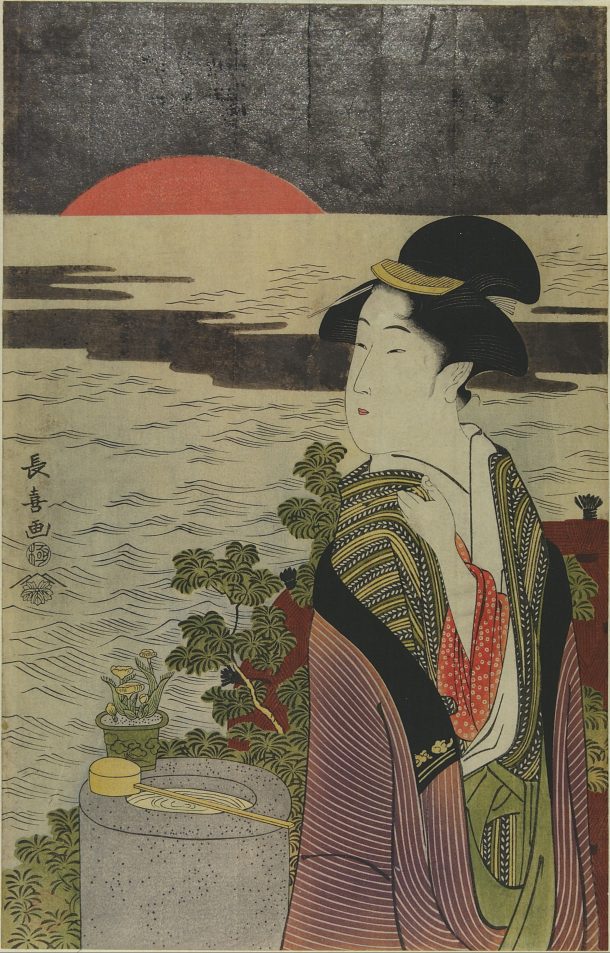
As the year draws to a close, many people around the world take part in a festival or religious celebration. What do you and your family celebrate at this time of year? Do you light a Menorah for Hanukkah? Have an Iranian feast to celebrate Yalda? Or decorate your home with Japanese Shimekazari to see in the new year?
Let’s celebrate Hanukkah
In 2020 the Jewish festival of Hanukkah (also known as Chanukah) took place in the middle of December. Families get together, spin the dreidel (a spinning top) and eat fried food. One of the most important elements of Hanukkah is lighting the menorah. The Hanukkah menorah is a candle holder. It celebrates the miracle of the one-day supply of candle oil lasting for eight days in the Holy Temple in Jerusalem. This is why there are eight candles on a menorah – plus the shamash, the ninth candle, used to light the other candles, and why the festival lasts for eight days. Traditionally during Hanukkah no one can work while the candles are burning, so it is a great time to be joyful and play!
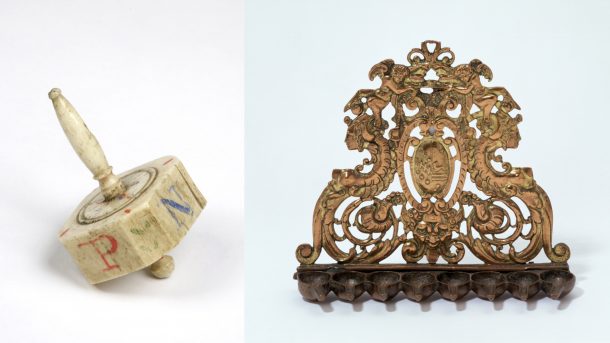
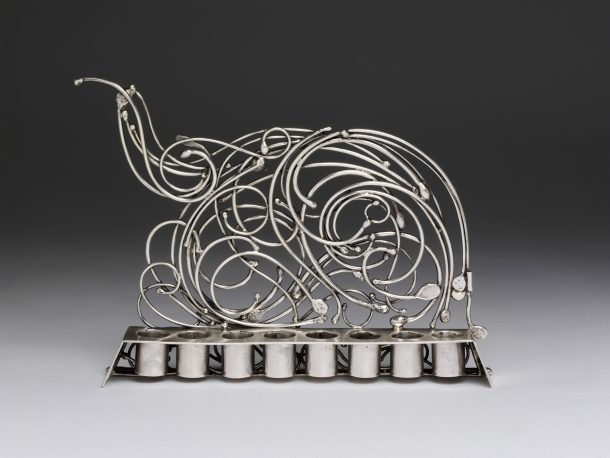
Let’s learn about Yalda Night
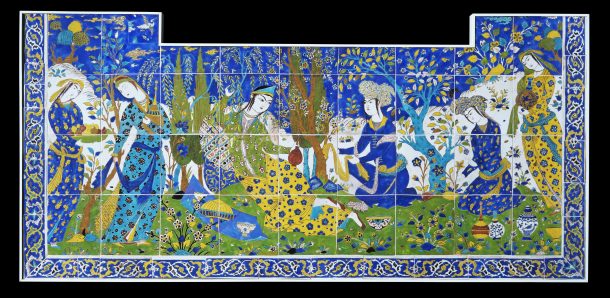
Shab-e Yalda (or Shab-e Chelleh, the ‘night of forty’) is an historical Iranian festival celebrated on the winter solstice – the ‘longest and darkest night in the year.’ Friends and family get together at the house of their eldest relative to eat, drink and read poetry until the early hours of the next day. People eat nuts and fruit – especially pomegranates and watermelons as they represent good fortune and health.
Let’s find out about Japanese New Year
At this time of year, people in many different cultures put decorations on their doors, windows or walls. To celebrate the New Year, families in Japan traditionally decorate and their houses with ‘Shimekazari’ and wear kimono during the festivities. In the video, you can tour the recent Kimono: Kyoto to Catwalk exhibition to see the many beautiful examples of kimono in the V&A collection.
A shimenawa is a decorated sacred braided rope made of straw that is hung on the entrance door to welcome good spirits to the house. It’s traditionally hung with carefully crafted zigzag-shaped white paper strips and can represent lightning. It can also represent divine, or unlimited power. It is decorated with ferns, flowers and other items that each symbolise good omens. Have a look at two examples made by families during one of our Drop-in Design family sessions.
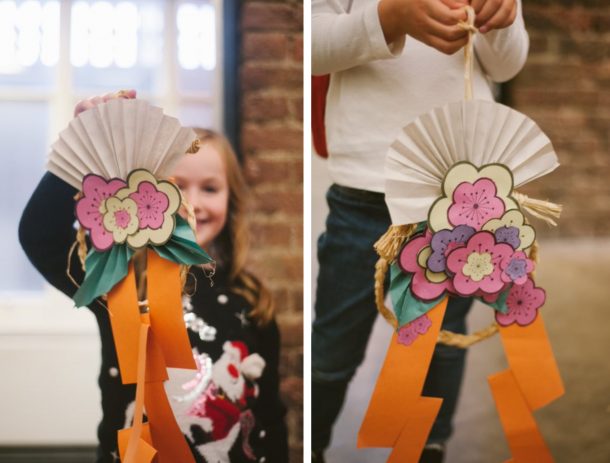
It is also traditional for many cultures to clean the house before the New Year’s celebrations begin. This helps us welcome in the new year with a clean house – and therefore a clean and clear mind! In these two woodblock prints, you can see images of samurai houses being cleaned ready for the celebrations. Do you clean your house or tidy your room before New Year?
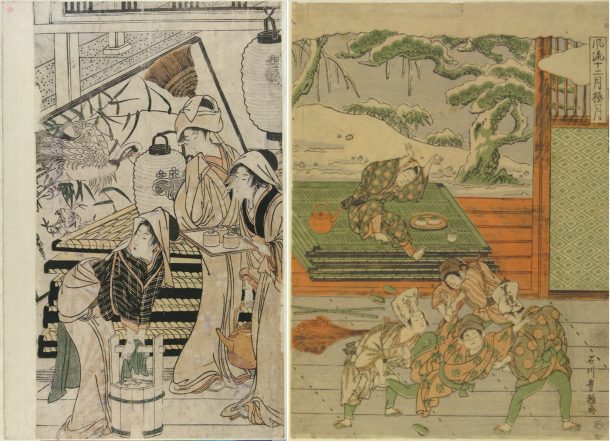
Let’s create our own seasonal celebration!
Will you play any games and light candles? How will you clean and decorate your home? What will you wear? Will you eat fruit and read poetry? Who will be part of your celebration?
Let’s make a decoration for your festival
Try using paper, scissors and a glue stick or tape to create your own collaged decoration that will welcome the things you are looking forward to!
Materials you will need:
- card, paper, spare magazines or leftover wrapping paper
- a pencil or pen
- some felt tips or markers
- a plate to draw around
- a glue stick, PVA glue or tape
- scissors
We made our own decoration different from, but inspired by, a traditional Japanese shimekazari.
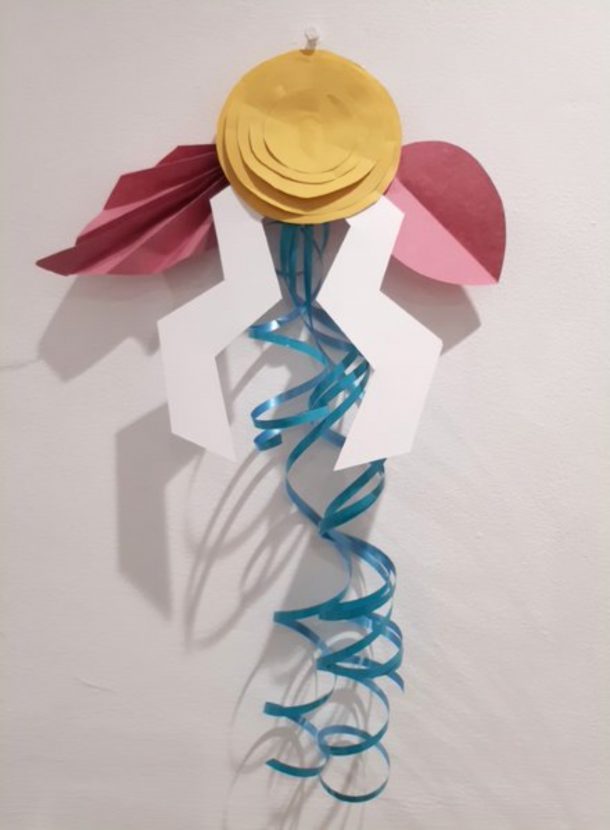
Let’s make a dish for your own special feast
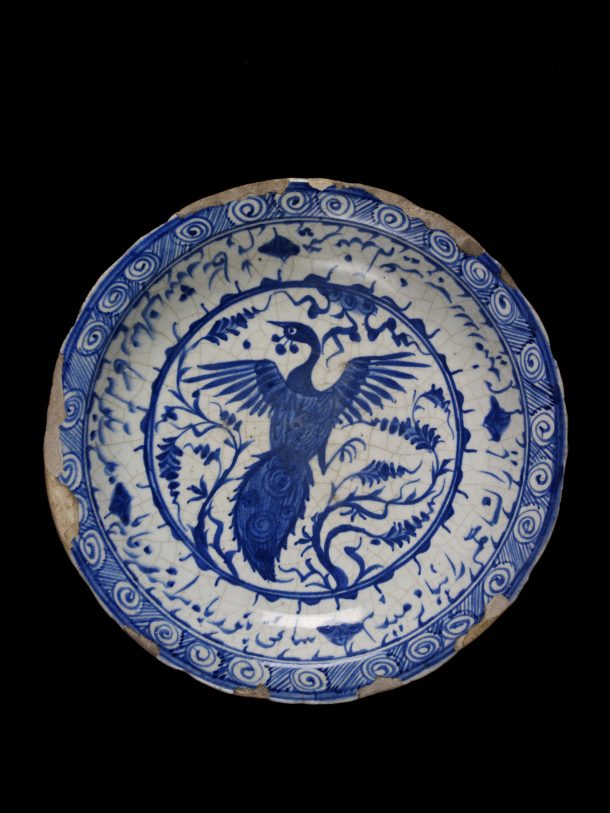
Step by step:
- Put a plate on top of a piece of paper or card and draw around it to make a circle.
- Cut out your circle with scissors.
- For your design, use images of food you like to eat, plants you know or animals that are important for you and your family.
- Decorate the outside of the circle with a repeating pattern or add some poetry!
- Use pencils, felt-tips, markers or paint!
Our plate design is inspired by a Persian dish in the V&A collection. It is decorated with painted leaves, vines, waves and a peacock. The poem on the plate, by the famous Iranian poet Hafez, celebrates and gives thanks for fruit and wine. We used blue felt tips to draw our design and wrote our own poem to celebrate what we like to do during this time.
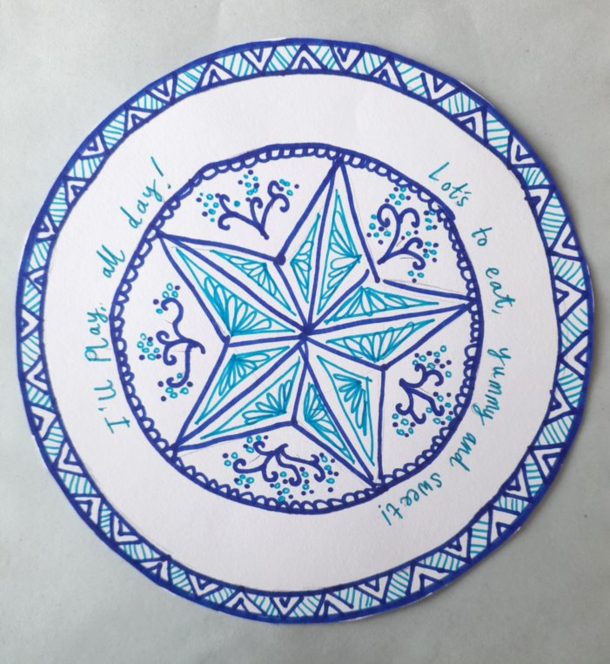
We made food by drawing on coloured paper to show what we like to eat and why. The broccoli symbolises health and growing strong. The chocolate and cake are delicious, but also symbolise a sweet new year! The pomegranate is traditionally eaten during Yalda Night celebrations because the red fruit is the colour of a new dawn and the glow of life.
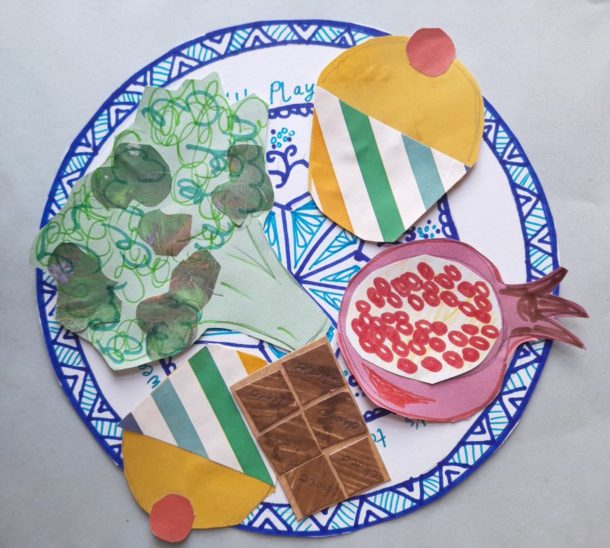
Don’t forget to share images of your celebration makes with us on social media!
#LetsMakeWednesdays


